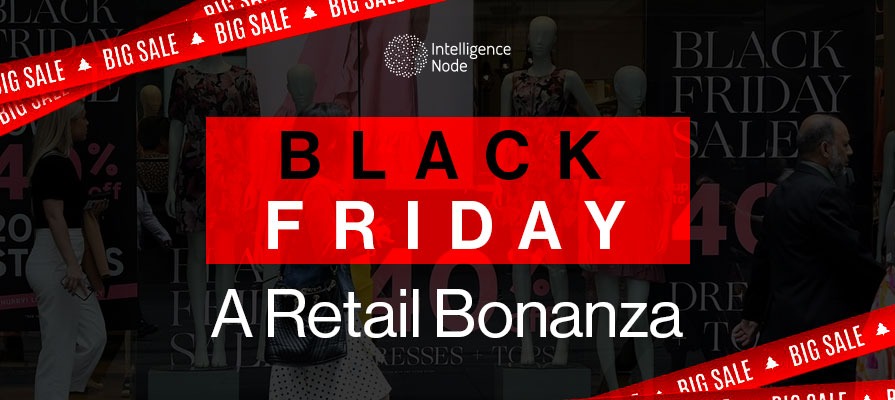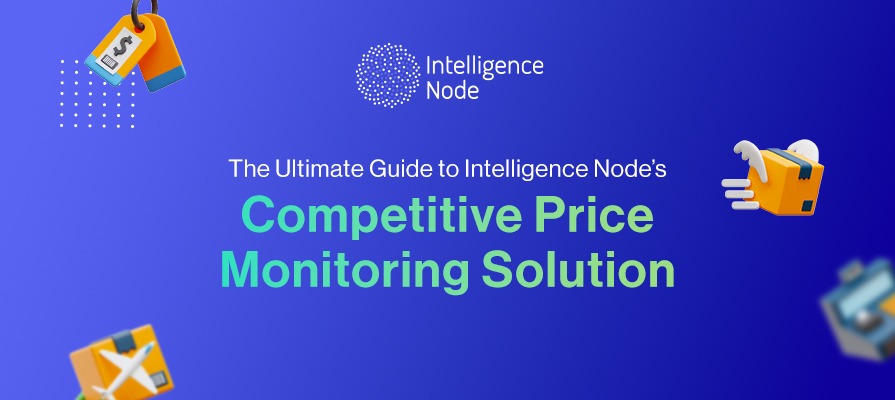As we approach November, the retail world buzzes with anticipation for Black Friday and Cyber Monday—the colossal pillars of annual consumer spending. A testament to their irresistible draw for consumers and retailers alike, last year, these events witnessed an incredible $9 billion and $11 billion in sales, respectively. They also set the stage for the Cyber Week extravaganza (the days between Thanksgiving and Cyber Monday), which in 2022 generated a whopping $36 billion in online transactions alone.
Every single year, brands eagerly participate, seeking to capitalize on the enthusiasm of shoppers and the incredible potential for profit and visibility. Yet, these pivotal days are not just about revenue; they offer a window into the latest consumer trends, purchasing behaviors, and the dynamic nature of eCommerce.
As average order values rise by the year, dive into our comprehensive breakdown for a sneak peek at the pivotal factors of these shopping holidays and uncover strategies to optimize your brand’s performance during this high-stakes period.
Black Friday: A Retail Bonanza
Black Friday Retail and eCommerce Trends
Black Friday, traditionally the day after Thanksgiving, marks the unofficial start of the holiday shopping season. Since the digital boom, we’ve seen a significant shift from in-store shopping to online purchases, with retailers following suit, creating engaging, compelling online campaigns and eCommerce sales. Still, the focus of the day remains largely on brick-and-mortar, with many brands hosting in-store events and exclusive discounts to draw in customers.
Further, steep competition has made it mandatory for brands to stand out against retail competitors with unique engagement activities, campaigns, personalized experiences, and strategic discounts.
Pricing and Discount Trends
For years, retailers have been pushing the envelope with aggressive pricing strategies on Black Friday. Deep discounts, even as high as 70%, are not uncommon. Bundle deals, bulk discounts, buy-one-get-one offers, and flash sales have also become increasingly popular for many major retailers. Electronics, fashion, and home appliances have seen some of the most significant price drops- often slashing newly released electronics prices by half, or stocking key apparel selections specifically for Black Friday sales.
Top Brands and Products
Historically, in the realm of electronics, brands like Apple, Samsung, and Sony have dominated Black Friday sales. In fashion, Nike and Adidas see a surge in sales, particularly for sneakers and activewear.
This year, Samsung, HP, and Apple are already running stellar deals on appliances, while Nike, Nordstrom, J. Crew and other apparel brands have begun offering 25% to 50% sales each. In beauty, popular brands such as Fenty Beauty, Sephora, and Ulta Beauty are running sales in the range of 20% to 40%. Superstores like Walmart, Lowe’s, Home Depot, and more have already released early access sales and live deals online and in store, selling multi-brand collections at slashed prices.
Key Strategies for Retail
Early Promotions:
Many retailers kick off their Black Friday deals well in advance to claim loyal, intent-driven shoppers straight to their own stores as early as possible. While many stores may host flash events or time-specific sales on the day itself, promoting sales through the month leading up to Black Friday can make all the difference in establishing your store as the ultimate holiday shopping destination early on in the season. Showcasing key products, popular items, and the best discounts of the day can create buzz and anticipation among shoppers seeking specific deals or items.
Omnichannel Approach:
Integrating online and offline channels provides a seamless shopping experience, as well as the opportunity to access a wider consumer base. Here, time-bound online sales and on ground promotions can be promoted seamlessly and simultaneously for the benefit of both online and offline shoppers, with exclusive incentives behind each. Offering ‘Buy Online Pickup In-Store” options as well as curbside pickup, flexible delivery, and more are a massive bonus for shoppers.
Inventory & Assortment Planning:
Stockouts can be an extremely dissatisfying, inconvenient experience for shoppers during the holiday season, especially during the rush of Black Friday. Any unavailable items at one retail store lead shoppers straight to competing stores for the items they need. Stock planning ensures popular items aren’t sold out too quickly- and with a robust retail analytics tool in your arsenal, it’s easier than ever to effectively gauge the demand of various products ahead of the season. This can help retailers plan inventory accordingly, building a strong assortment of various products without stock outs or overstocking low-popularity items.
Cyber Monday: The Digital Shopping Extravaganza
The Shift to Online
While Black Friday has its roots in physical stores, Cyber Monday, created in 2005, is purely a digital affair. It has rapidly grown to rival and, in some instances, surpass Black Friday in terms of sales. In 2023, Cyber Monday sales reached a staggering $10.8 billion, a clear indication of the online shopping trend’s upward trajectory.
Pricing Strategies
Cyber Monday deals are often more focused on tech products and gadgets. Flash sales and limited-time offers create a sense of urgency and encourage impulse purchases. Moreover, some retailers offer additional discounts for mobile app purchases to promote their apps or online platforms.
Top Brands and Products
Amazon, being the eCommerce giant, leads the pack with its wide range of deals. Electronics steal the show, with products like the Amazon Echo, Apple AirPods, headphones, and various 4K TVs being top sellers. Additionally, subscription services like Netflix and Spotify often offer special Cyber Monday rates.
Key eCommerce Strategies
Mobile Optimization:
According to reports by Adobe, 43% of Cyber Monday sales were from mobile devices last year- similar to reports by Shopify, who claimed a massive 73% of sales from mobiles as well. Evidently, having a mobile-optimized platform is crucial. Fast-loading websites and easy navigation are essential to keep shoppers engaged. Chatbots and virtual shopping assistants can be a massive bonus for stores with large assortments of products to encourage sales and help shoppers find the right product for them.
Enhanced User Experience:
Paid search is the top marketing strategy for retailers in 2023- yet, with dire oversaturation and intense competition, organic search is the most sustainable and effective means to guarantee visibility for top products and brands online. An optimized search experience with clearly attributed and labelled product display pages can greatly improve shopper experience in the ease of finding products at your store. Further, with clear images, accurate descriptions, and detailed reviews, shoppers can get a more accurate picture of what they are purchasing as they browse, decreasing the likelihood of returns or dissatisfaction. This, plus flexible and customizable payment and delivery options are game changes for shoppers on the go.
Personalization:
Using data analytics to offer personalized deals can significantly boost sales- robust recommendations algorithms, accurate sizing details, and customized landing pages are highly appealing ways for retailers to grasp and retain shoppers’ attention. Custom coupon codes, recommendations based on purchase history, and even cross or upselling prompts are key to encourage customers to shop more. Targeted email campaigns can remind customers of deals, discount periods, and top products to encourage purchases.
Conclusion
As technology and consumer preferences evolve, these shopping events will undoubtedly continue to shape the future of retail and eCommerce. Black Friday and Cyber Monday continue to be pivotal events for retailers and consumers alike. While Black Friday has adapted to include more online offerings, Cyber Monday strengthens its position as the go-to digital shopping spree. By understanding market trends, pricing strategies, and assortment optimization and by implementing key retail and eCommerce strategies, businesses can maximize their profitability during these crucial sales periods.
To learn how to equip your retail store with the best analytics tools on the market, book a demo today!




